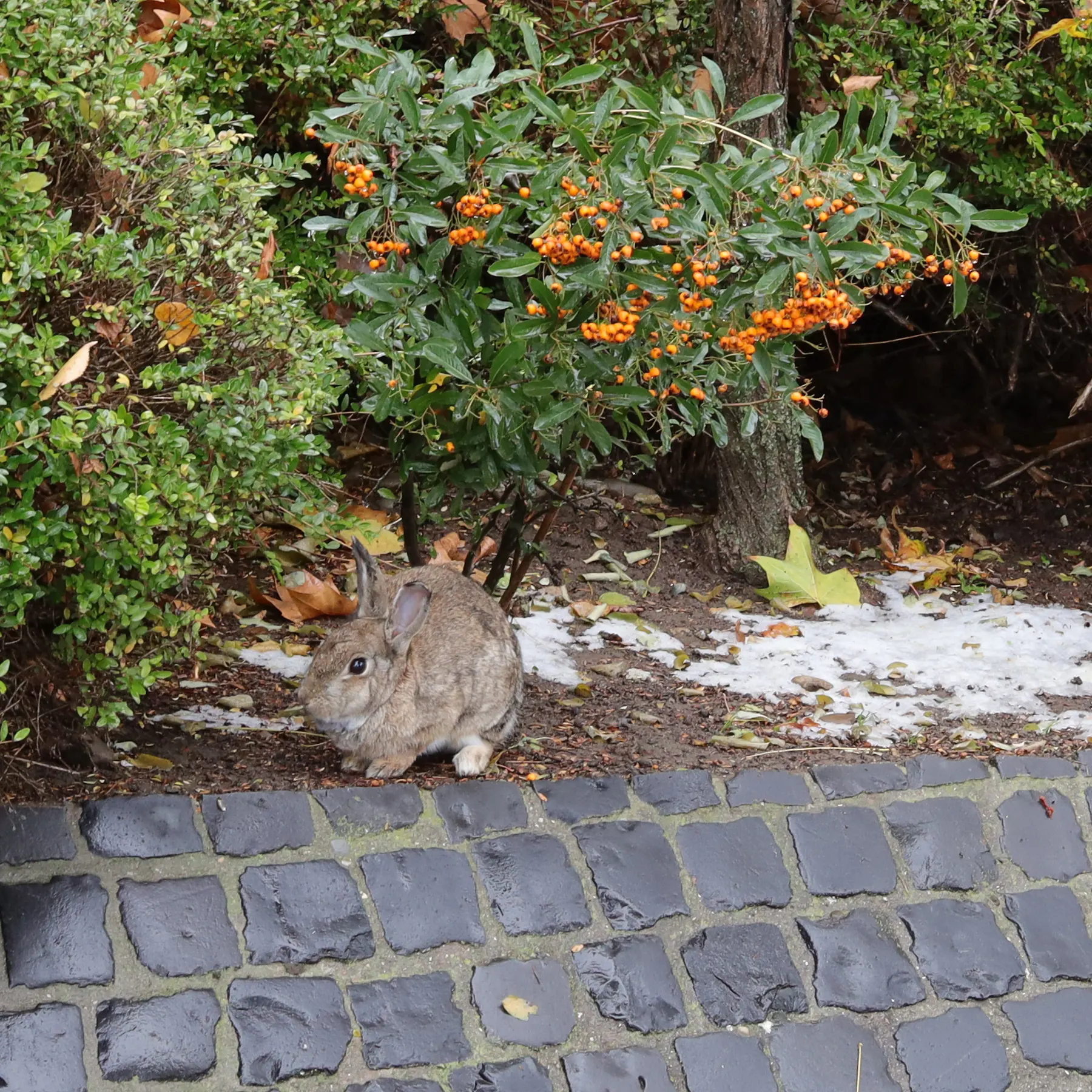The European Rabbit (Oryctolagus cuniculus) is not only the wild form of the domestic rabbit, it is also commonly found in urban areas. For example, in parks and gardens. Since it digs deep burrows with long tunnels, it is not loved everywhere. Moreover, it can multiply en masse, especially if it is fed.
But nature has set limits to this mass reproduction. In the form of myxomatosis.

After it was almost impossible not to stumble across a rabbit in my neighbourhood in 2020 and 2021, less than half* of the rabbits were to be seen alive in 2022. But instead there were many dead specimens and some visibly ill ones.

As long as you do not show interest in them, urban living rabbits are not shy and are not disturbed by people walking by. This behaviour changes when they feel observed.
By the way, rabbits are not related to rodents. The best time to observe them is in the early morning hours. In summer between 4.00 and 6.00 am.

* The decline I observed could have other causes, such as control measures.
Categories: Mammals

 Oryctolagus cuniculus
Oryctolagus cuniculus